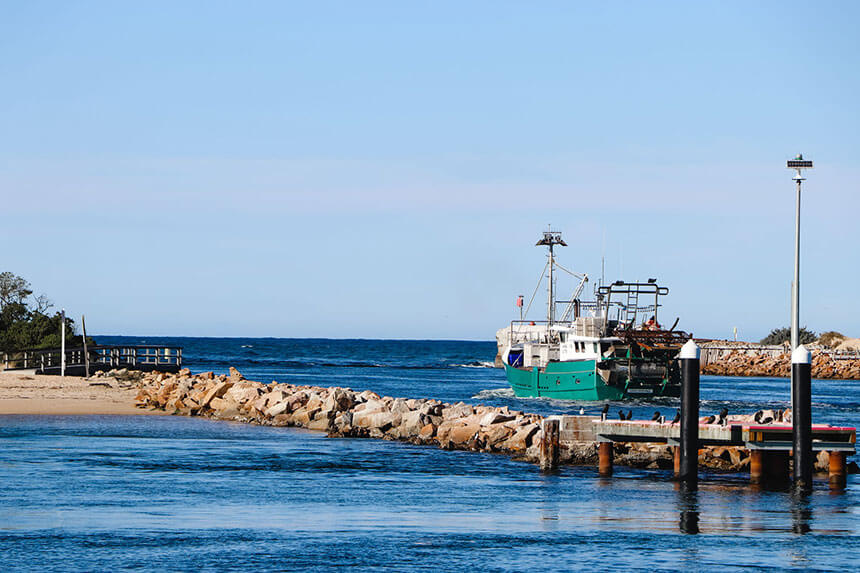Lakes Entrance’s fishermen are facing testing times.
French seismic testing company, CGG, started the largest seismic survey ever undertaken in south-east Australia the morning after bushfires swept through communities just north of Lakes Entrance in January this year, with South East Trawl Fishing Industry Association (SETFIA) claiming it has significantly affected catch rates.
Marine seismic surveys use blasts from a powerful air gun that is up to 16km wide to see kilometres into the earth to map reserves of oil and gas.
SETFIA says surveys like this are now proven to kill scallops and zooplankton and also to damage crayfish – in testing, some crayfish put into tanks upside down following the survey have been unable to upright themselves, according to SETFIA executive officer, Simon Boag.
CGG’s survey will cover more than 13,000km2 – an area about half the size of the East Gippsland land mass.
The Australian Government has forced CGG to pay compensation to fishermen if catch rates drop. CGG and the fishing industry (FRDC) have cofunded a study about whether the seismic survey is impacting fishermen’s catch rates.
Mr Boag said CGG had refused to release data to the fishing industry about how many claims had been made by fishermen and how many have been paid until last Friday when he was told six of 29 claims had been dealt with after four months of surveying.
“Our concern has always been that CGG will finish this survey and sail back to France leaving destruction behind,” Mr Boag said.
“In 2017 CGG announced a US$128m loss, their debt increased to US$2.6b and they filed for bankruptcy. Only a restructure saw them continue.
“Some vessels have experienced drops in catch rate of more than half in the wake of the survey. Fishermen now call the surveyed area the dead zone.
“Fishermen are telling me they can feel the seismic blasts shake their boats at night when they are on anchor trying to sleep.
IMAGE: The Northern Star heads out the entrance at Lakes Entrance in search of its next catch, however seismic testing taking place in the area has caused catch rates to drop, according to South East Trawl Fishing Association (SETFIA) chief executive officer, Simon Boag. (Photo: Nephelle Watts)
